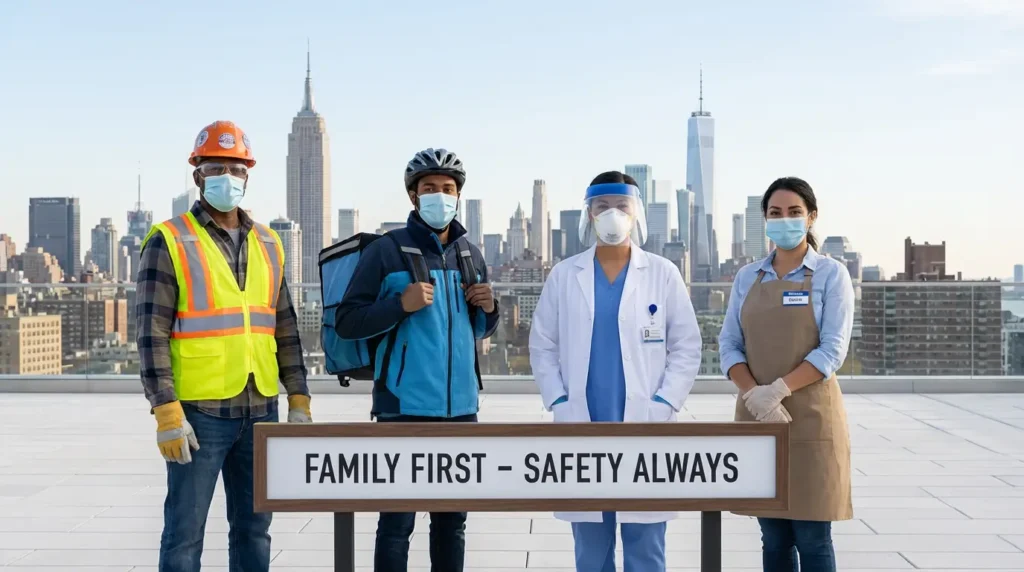The Number of Workers Affected By Musculoskeletal Disorders
Updated on:
Published on:
September 9, 2024
In 2018, approximately 272,780 cases of musculoskeletal disorders (MSDs) led to workers taking days away from work, accounting for roughly 30% of all such incidents in the U.S. private sector. This figure highlights the significant impact of MSDs on the workforce, particularly in industries involving repetitive motion, overexertion, and awkward postures.
Overview of Musculoskeletal Disorders (MSDs)
- Definition: MSDs are injuries or disorders that affect the body’s musculoskeletal system, including muscles, tendons, ligaments, nerves, and other connective tissues.
- Common Causes:
- Overexertion from lifting, pushing, or pulling.
- Repetitive motion leading to wear and tear over time.
- Prolonged periods in awkward or non-ergonomic positions.
National Statistics on MSDs (2018)
- Total MSD Cases: 272,780 cases in the private sector.
- Incidence Rate: 27.2 per 10,000 full-time workers.
- Median Days Away from Work: 12 days.
- Trend Comparison: In 2011, there were 311,840 MSD cases with an incidence rate of 35.4 per 10,000 workers and a median of 11 days away from work.
Industry-Specific Breakdown of MSDs (2018)
- Health Care and Social Assistance
- Total Cases: 56,360
- Incidence Rate: 38.4 per 10,000 workers
- Median Days Away: 8 days
- Key Insight: This sector had the highest number of MSD cases, largely due to the physical demands of patient care.
- Retail Trade
- Total Cases: 41,070
- Incidence Rate: 34.8 per 10,000 workers
- Median Days Away: 10 days
- Key Insight: Frequent lifting and stocking activities contribute to high MSD cases.
- Manufacturing
- Total Cases: 38,640
- Incidence Rate: 30.6 per 10,000 workers
- Median Days Away: 14 days
- Key Insight: Repetitive tasks on assembly lines and heavy lifting are significant contributors to MSDs in this industry.
- Transportation and Warehousing
- Total Cases: 38,350
- Incidence Rate: 77.1 per 10,000 workers
- Median Days Away: 26 days
- Key Insight: This industry had the highest incidence rate, indicating the physically demanding nature of loading, unloading, and transporting goods.
- Construction
- Total Cases: 19,380
- Incidence Rate: 28.9 per 10,000 workers
- Median Days Away: 10 days
- Key Insight: The nature of construction work, involving heavy lifting and awkward postures, leads to substantial MSD cases.
- Wholesale Trade
- Total Cases: 18,190
- Incidence Rate: 32.3 per 10,000 workers
- Median Days Away: 11 days
- Key Insight: Tasks similar to those in retail contribute to moderate MSD cases.
- Financial Activities
- Total Cases: 6,330
- Incidence Rate: 8.3 per 10,000 workers
- Median Days Away: 21 days
- Key Insight: Lower incidence but longer recovery times, often due to repetitive strain injuries from office work.
- Information Industry
- Total Cases: 5,210
- Incidence Rate: 20.1 per 10,000 workers
- Median Days Away: 33 days
- Key Insight: The longest recovery period, suggesting more severe injuries possibly related to poor ergonomics.
- Agriculture, Forestry, Fishing, and Hunting
- Total Cases: 2,910
- Incidence Rate: 28.5 per 10,000 workers
- Median Days Away: 11 days
- Key Insight: Despite fewer cases, the physical nature of these jobs still poses significant risks.
Occupational Breakdown of MSDs (2018)
- Top Occupations: Laborers, freight, stock, and material movers, nursing assistants, and heavy and tractor-trailer truck drivers.
- Laborers and Freight, Stock, and Material Movers: 25,110 cases.
- Nursing Assistants: 15,360 cases.
- Heavy and Tractor-Trailer Truck Drivers: 14,810 cases.
- Percentage of DAFW Cases: 52% of nursing assistants’ DAFW cases were due to MSDs.
- Median Days Away for Truck Drivers: 21 days, reflecting the physical strain of long hours and manual tasks.
Age-Related MSD Statistics (2018)
- Workers Aged 45-64:
- Incidence Rate: Over 30 cases per 10,000 workers.
- Total Cases: 117,190 (44% of all private sector MSD cases).
- Workers Aged 65 and Over:
- Total Cases: 10,010.
- Incidence Rate: 21.2 per 10,000 workers.
- Key Insight: Older workers are more susceptible to MSDs, reflecting the cumulative impact of physical labor over time.
Recent Trends in MSD Cases (2021-2022)
- Total DART Cases (Private Sector): 976,090 MSD cases.
- DAFW Cases: 502,380 in 2021-2022.
- Biennial Reporting: Starting in 2021, BLS transitioned to a biennial reporting schedule, providing a more comprehensive view of MSD cases over two years.
The Impact on Workers and Workplaces
- Lost Workdays: The median days away from work due to MSDs ranged from 8 to 33 days, depending on the industry.
- Workplace Burden: MSDs are a significant cause of lost productivity, affecting both individual workers and overall industry performance.
- Causes: The main reason of DART cases 2021-22 remained due to overreaction or bodily reactions of the workers mostly (100%), while overreaction due to outside sources was 70%. Lifting or lowering for lifting things were 33% cause of musculoskeletal injuries.
Musculoskeletal disorders (MSDs) lead to substantial workforce disruptions, with median lost workdays ranging from 8 to 33 days across different industries. This results in a notable decline in productivity, impacting both individual workers and overall industry performance, highlighting the urgent need for effective prevention and management strategies.
Conclusion
Musculoskeletal disorders (MSDs) continue to be a major concern in numerous industries, significantly affecting workers’ health and productivity. Physically demanding jobs in sectors like healthcare, transportation, and manufacturing exhibit higher rates of MSDs, leading to extended recovery periods and increased absenteeism. For instance, healthcare workers face repetitive strain injuries, while manufacturing employees frequently deal with back and joint issues.
Transportation workers often experience musculoskeletal strain due to prolonged sitting and heavy lifting. Analyzing these statistics helps in crafting targeted ergonomics and injury prevention strategies, aiming to reduce MSD prevalence and enhance overall workplace safety and efficiency.
Related Posts

NY OSHA 30 vs Federal OSHA 30: Key Differences

How Mayor-Elect Mamdani Can Improve Worker Safety in NYC



